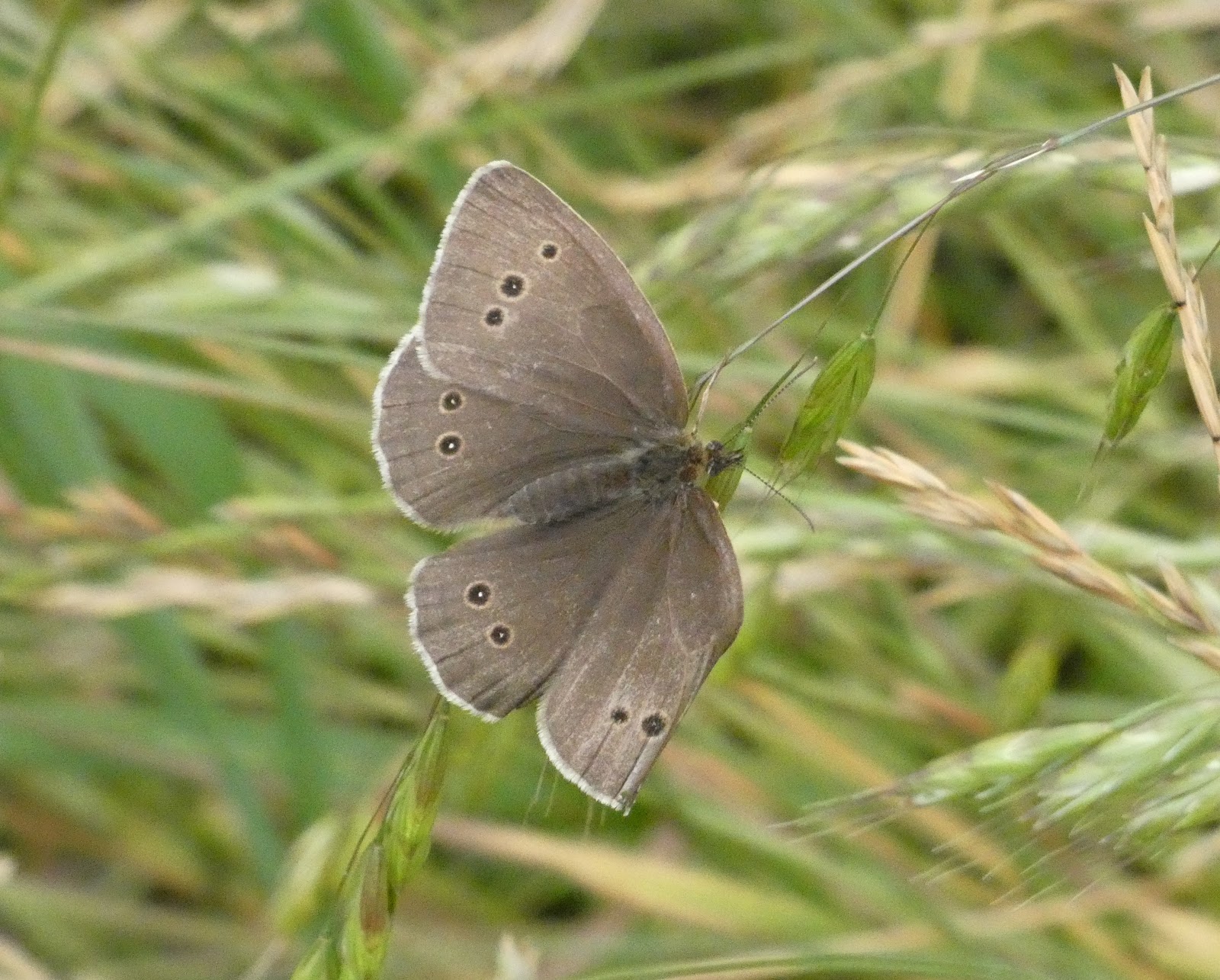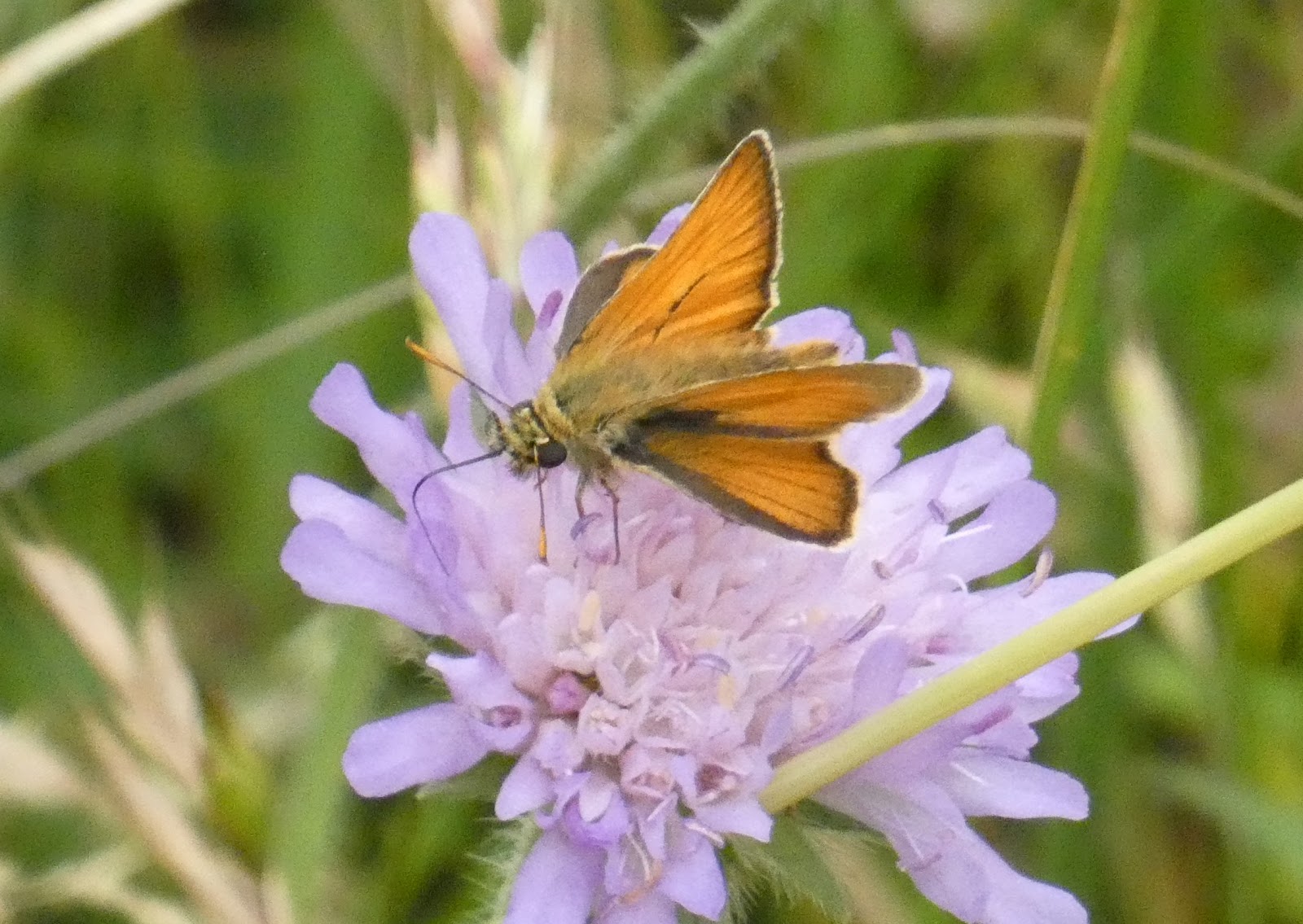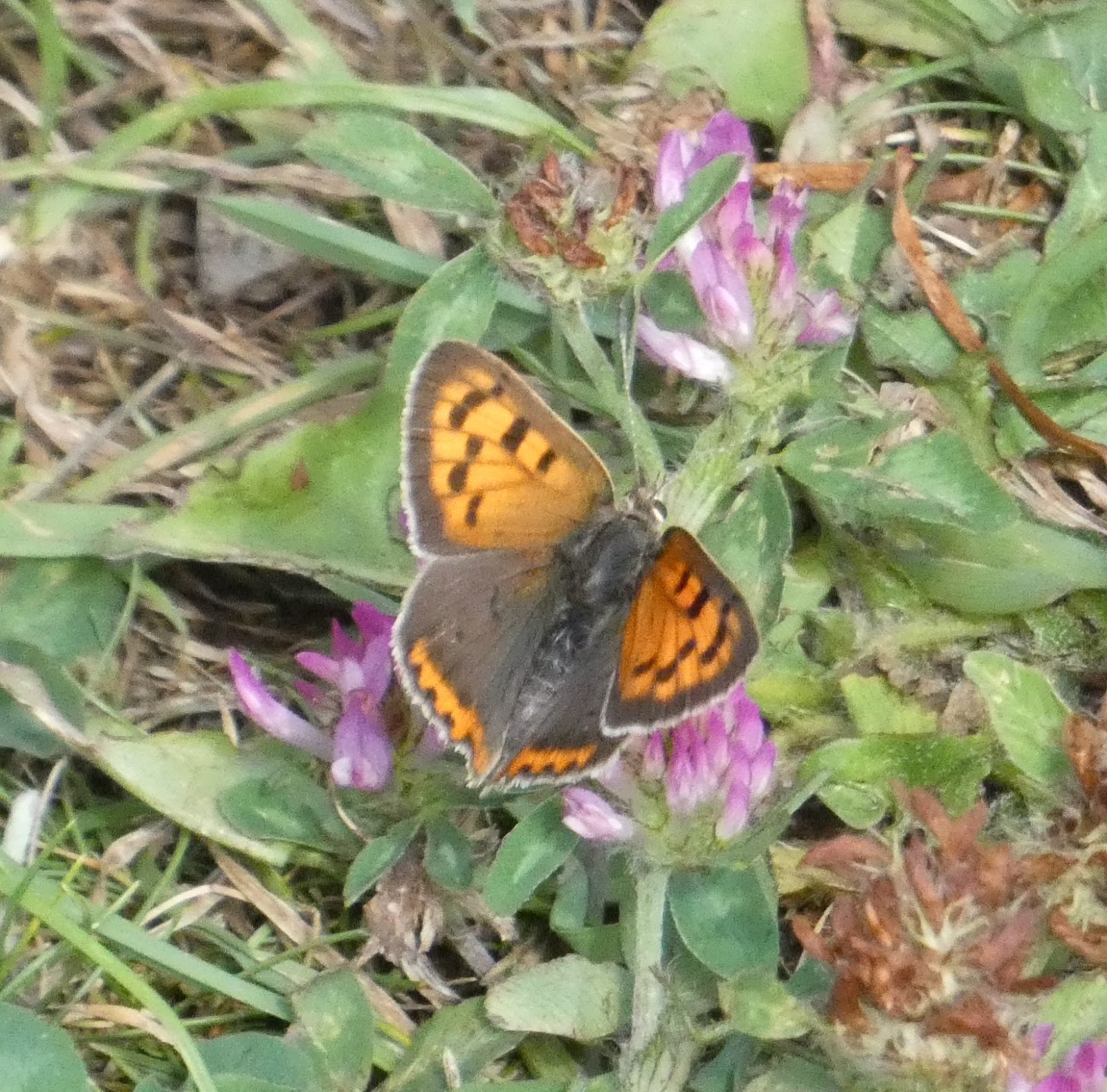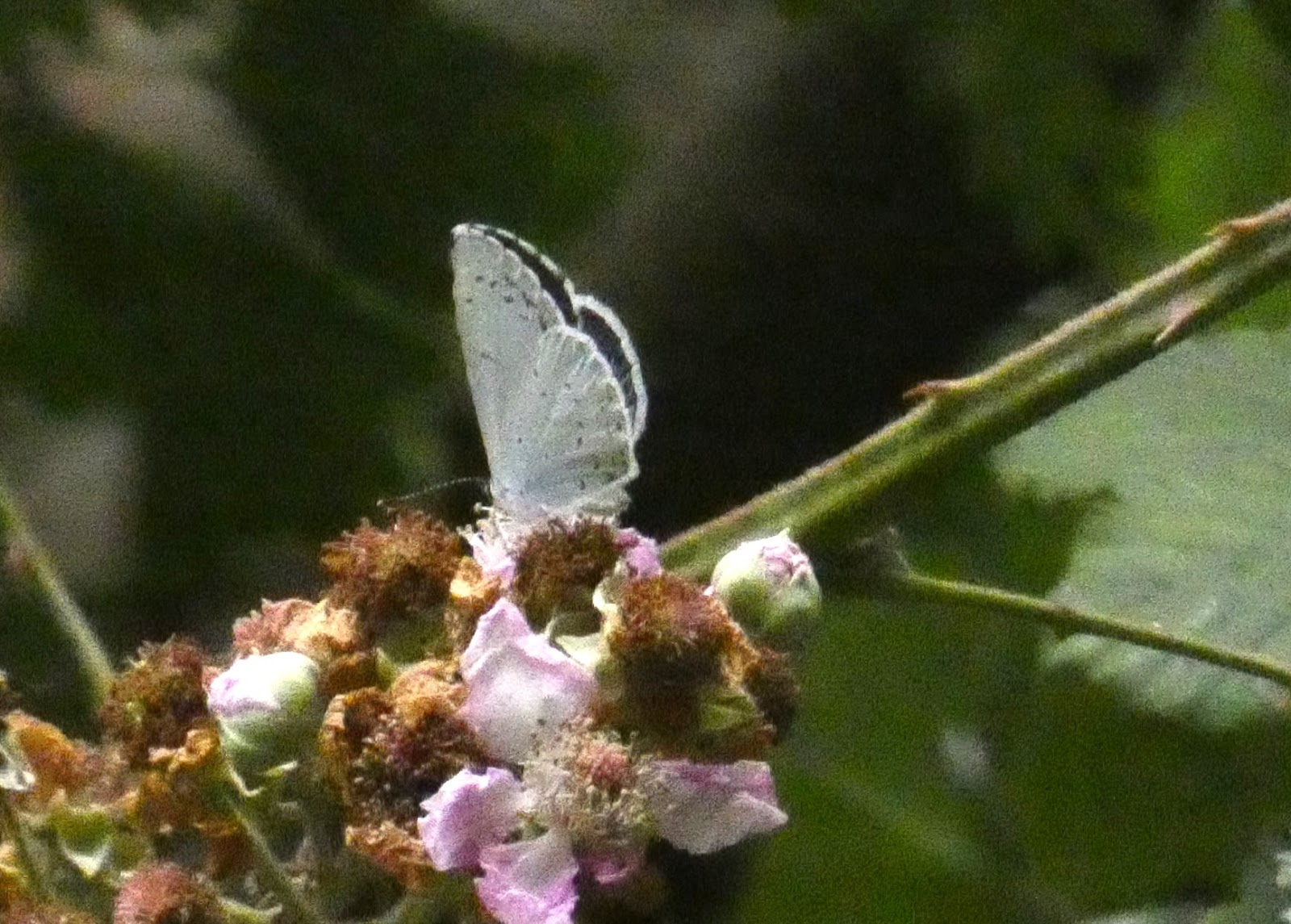After returning to Bristol, I have been spending some time looking at butterflies again on the Downs and in the Avon Gorge. After doing a little on-line sleuthing, I confirmed that Chalkhill Blue was still occurring in the Gully area, but Small Blue was no longer regular. In addition, I noticed that Essex Skipper now occurred. This is a species that has been expanding its range in the UK since I departed.
Despite a lot of heatwave hype, a fair amount of cloud cover remained over Bristol keeping the temperature several degrees lower than the forecasts. However, temperatures were warm enough for butterflies to be somewhat active even when cloudy, with naturally more showing during sunny intervals.
My hopes that a greater variety of butterflies would have emerged during the ten days I was 'up north' were met. Gatekeepers has clearly just emerged and became commoner each day I looked. Of the other 'browns', Meadow Browns were commoner, Ringlets at least as common, but Marbled Whites less common than in mid-June. This seemed to confirm that, this year at least, Marbled White is flying earlier than 45 years ago.
The morning of June 28, I decided to check out a nice flowery meadow along the bottom of the Avon Gorge I had discovered a couple of weeks earlier. My goal here was to find skippers, and I was particularly hoping to find Essex Skipper. As the day warmed and the sun began to occasionally peak through the clouds, butterflies started to appear in good numbers. The predominant species were Meadow Brown, Ringlet and Green-veined White. I managed a rare photo of a Ringlet with open wings.
Eventually, I came across a skipper that was obviously Small or Essex. Closer examination showed it to be a Small, as it lacked the dark tips to the underside of the antennae.
Further searching for skippers in the meadow turned up an additional Small Skipper as well as a couple of unidentified ones. While looking for skippers, I also saw a Marbled White or two and came across a smart Small Copper.
After leaving the meadow, I spent some time checking flowering plants, especially buddleias, along the bottom of the gorge as I worked my way to the base of the Gully. This proved productive for nymphalids as I found ones and twos of Peacock, Red Admiral, Comma and Small Tortoiseshell. The last species was formerly very common but collapsed shortly after I left the UK. My experience around the Downs and the Gorge now is that it is possibly the least common of these four species whereas in my youth it outnumbered Peacocks five to one and Red Admirals and Commas ten to one.
In addition to the nymphalids, I also found a Large Skipper and both Small and Large Whites. Heading up the Gully, I failed to find any Silver-washed Fritillaries and a scramble up the scree slope where the Chalkhill Blues were supposed to occur similarly drew a blank, although this species probably won't be emerging until mid July. Checking the bramble patches along the woodland edges at the head of the Gully did prove more productive with several Commas and Gatekeepers, a Silver-washed Fritillary and fly by blues that were likely Holly based on behavior. I had a couple of hairstreaks flying around a combination of oaks and Wych Elm branches, which are hosts the two hairstreak species I used to see here back in the 1970s - Purple and White-letter.
Three days later, I returned to this area to make a more determined effort to find and photograph the blues, Silver-washed Fritillary and any hairstreaks. After some persistence, I was able to get a shot off at a Holly Blue that landed to nectar on a flower. The fritillary offered only a brief fly-by and I was presumably too early for the main emergence, as I have seen them easily later in the summer. Persistence with hairstreaks paid off as I was able to see at least three individuals clearly associated with oaks. Eventually, a hairstreak came down to perch on a bramble stem and I was able see it was certainly a Purple. Unfortunately, it didn't hang around long enough for me to get a photo.







Comments
Post a Comment